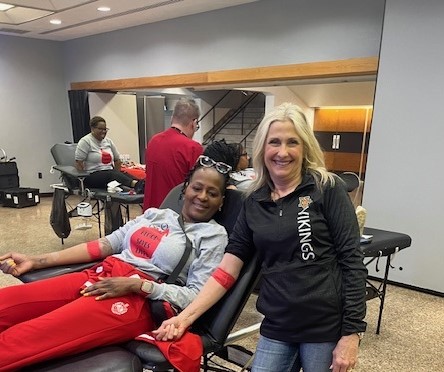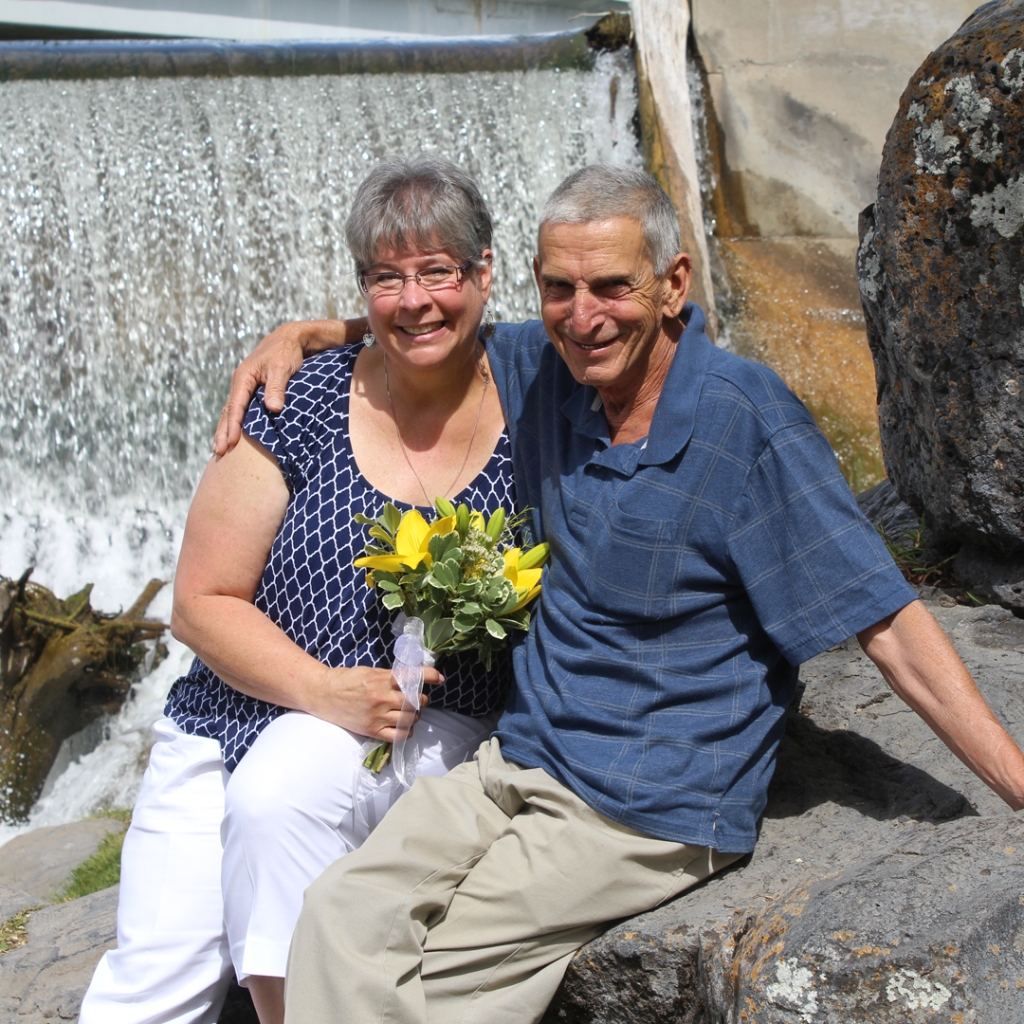By Eilene E. Guy, American Red Cross volunteer
When Dr. LaTrice Snodgrass puts her mind to a project, she goes all in.
Recently, she partnered with the American Red Cross and others to stage a blood drive targeted at the Black community, to benefit people living with sickle cell disease (SCD).

Not only did she spearhead the event, she literally rolled up her sleeve to donate blood – for the first time.
Through this donation, LaTrice learned that her blood is negative for three components, which makes her an ideal SCD donor. Blood transfusions from donors like LaTrice are vital to let SCD patients live comfortable, healthy lives.
LaTrice knows the importance of blood donations from her own racial community. More than 100,000 Americans — mostly African Americans — have sickle cell disease, which causes acute pain and over time damages vital organs. Her sorority, Delta Sigma Theta, put out a national call to boost donations from African Americans. “I told my sisters, we need to do this,” she said.
“I know there is a resistance in the Black community to trusting the medical establishment, but we have to overcome that. Our blood is truly lifesaving.” she said, explaining her decision to give blood for the first time, despite not being enthusiastic about needles.
SCD is an inherited condition that distorts soft, round red blood cells, turning them hard and crescent shaped. As a result, blood can’t flow smoothly to carry oxygen throughout the body, causing fatigue, severe pain, tissue and organ damage and even strokes.
Kim Kroh, executive director of the Heartland, Stark and Muskingam Lakes chapter of the Red Cross, was delighted to support LaTrice’s initiative. The project soon recruited the Strong Family Wellness Weekend, sponsored by Sean and Shaheedrah Strong, as well as the Black Nurses Association, Akron Children’s Hospital and Beacon Charitable Pharmacy, where LaTrice serves as CEO.
The drive at the Canton Civic Center exceeded its collection goal and, importantly, involved a lot of first-time donors.
“When the time comes for me to donate again, I plan to. And I’m going to reach out to my sorority sisters and friends to remind them that they need to donate again too,” she said.
Kim Kroh from the Red Cross, who has been giving blood for years, was on hand to support LaTrice through her first “poke.”
“I have a passion for (the cause of) sickle cell,” Kim said. “I know a teenager with sickle cell. What they go through is just terrible.”
The Red Cross supplies some 40 percent of the nation’s blood supply and launched a specific Sickle Cell Initiative three years ago to boost blood collection for this set of recipients.
Although Kim’s blood isn’t uniquely beneficial for SCD patients, it’s also vital: Every two seconds, someone in the U.S. needs blood, to deal with complications of childbirth, treatment for cancer, surgery or emergency room trauma.
To learn more about SCD or to make an appointment to donate blood, visit RedCrossBlood.org, use the free Blood Donor App or call 1-800-REDCROSS.
Edited by Glenda Bogar, Red Cross volunteer
Posted by Ryan Lang, Red Cross board member and volunteer

